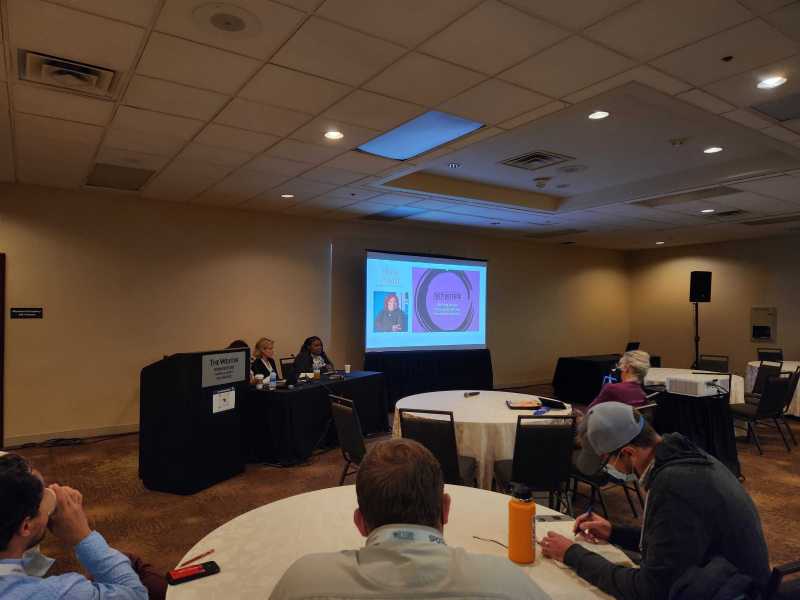When Delaney Butler, program coordinator at the Solutions Journalism Network, sits down with journalists to discuss bringing solutions reporting into their work, she asks: “What’s the problem in your community? What keeps you up at night? What’s the thing that everyone says is unsolvable?”
Butler and the Solutions Journalism Network are working to bring solutions-style reporting to more communities. However, not every journalist is familiar with the process.
What is Solutions Journalism?
Solutions journalism adds an additional “W” to who, what, when, where, and why. It asks “What’s next?”
The practice, as defined by the network, is reporting that “investigates and explains, in a critical and clear-eyed way, how people try to solve widely shared problems. Shedding light on issues is at the core of reporting.”
The reporting approach aligns with traditional reporting styles but ensures there are elements of four core pillars in each piece: response, insight, evidence, and limitations.
- Response: The story focuses on the response to the issue rather than the issue itself, unpacking how it has succeeded or fallen short.
- Insight: The piece aims to offer insight into the issue by streamlining the details of the solution. The goal is to be understandable for the broadest possible audience.
- Evidence: Like all good reporting it must be backed up by evidence, clearly stated, and researched by the reporter. This can be quantitative data or qualitative experiences.
- Limitations: The piece continues to instill the crucial integrity of journalism by being upfront about the limitations of responses reported on.
Journalists’ Perceptions of Journalism
At the Table Talk on solutions reporting at ONA22 on Friday, participants had lingering questions about how solutions reporting could be used in their publications. There are concerns about how solutions writing is similar to advocacy journalism and how to get newsrooms and editors to invest in the time and resources that it takes to do the work.
Advocates for the approach say it’s all about building trust.
Scholars like Kyser Lough and Karen McIntyre study solutions journalism and find that in the face of today’s common views on the trustworthiness of the media a Solutions Journalism approach “has the potential to rebuild lost credibility and interest from their readers, viewers or listeners.”
In 2018 Lough and McIntyre published Journalists’ perceptions of solutions journalism and its place in the field. Through a series of in-depth interviews with 14 journalists familiar with the practice, this study uncovered three key points that the journalists believed about solutions journalism. The journalists saw the practice as investigative reporting with the added step of identifying what is already being done. They were drawn to its potential for covering a range of topics, but also believe it can cover some topics better than others. They thought that the solutions will be a significant part of the future of journalism as it can repair the audience’s interest and trust in the media. However, there are concerns about objectivity.
Critiques of Solutions Journalism
The study also highlighted some critiques of solutions journalism. Some may mistake solutions for puff pieces that only focus on good things and steal attention from larger issues. According to Lough and McIntyre journalists are concerned that solutions journalism is rigorous and takes time, making it impractical for breaking news. It can also call a reporter’s objectivity into question.
However, Saturday’s session The New News: How Solutions Reporting Can Build Audience and Generate Revenue panelists reinforced how powerful solutions reporting is when focused on local communities.
“If we go to our communities first, if we are centering our communities first, and communities tell us these are the issues they’re interested in, issues they want to learn more about and understand better, then we are advocating for a community, right?,” said Tracie Powell, CEO and founder of The Pivot Fund, an organization dedicated to investing in independent BIPOC-led community news. “We’re not advocating for an issue or a candidate or position, we’re advocating for our community. And isn’t that the mission of journalism to begin with? I mean that’s the reason we exist, you know, we’re mentioned in the U.S. Constitution. We are supposed to be on the side of the public.”






